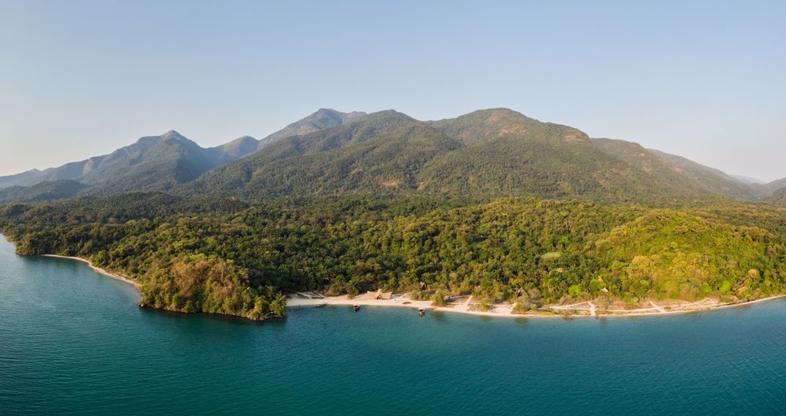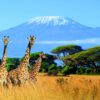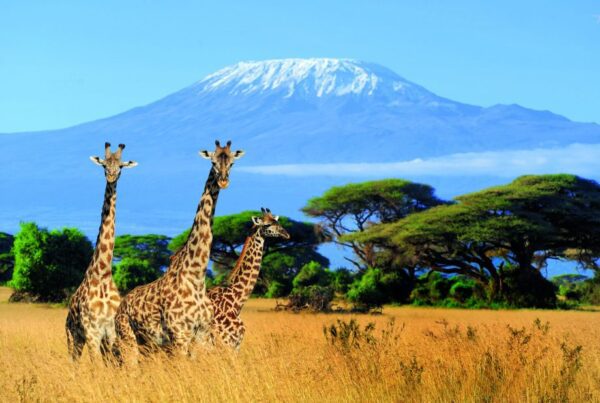What makes Mahale Mountains National Park special?
Along with Gombe and Rubondo Island, Mahale Mountains National Park, which borders Lake Tanganyika, is one of three Tanzanian parks that are home to endangered chimpanzees.
But because of its location, a lot of tourists depart Tanzania without doing any exploration. What makes it so special, by the way? We’ll explore Mahale’s natural beauty in this post. We’ve added lesser-known wonders, so stay tuned.
Chimpanzees from the east.
It’s true that one of Mahale’s main draws is the wild chimpanzees. In the highlands of the Mahale Mountains range, you will come across these sophisticated primates, but you won’t be able to cross off the Big Five. There are about 1,000 chimpanzees living in Mahale. The chimps that live here are members of an eastern subspecies that do well in the highland woods.
We are quite similar to these wild primates, as evidenced by the 98% DNA similarity between them. They thus establish familial units (or battalions) under the leadership of a large silverback, just like humans do. There are fourteen chimpanzee groups in Mahale. However, only one group—the Mimikere group—is habituated at the time of writing. Japanese researchers have made this group human-friendly.
Nine ape species call this place home.
Other primate species live with chimps in Mahale’s thick, uncharted woodlands. These include three species of Galago, vervet monkeys, blue monkeys, yellow baboons, red colobus, red-tailed monkeys, and pied colobus.
Hikes in the mountains and excursions in the bush are common places to see these primates. As you search for chimpanzees, you could hear them feeding on the leaves foliage or trembling tree limbs.
animals other than primates.
Despite being the main attraction, monkeys are not the only animals that call Mahale home. Mongoose, warthogs, sable and roan antelopes, and occasionally crocs and hippos are among the numerous other creatures. If you’re lucky, you may even see large animals like leopards and lions.
All of these creatures can live together in Mahale’s varied ecosystems. For instance, chimpanzees and lions only cohabit in a small number of parks. While chimpanzees flourish in alpine forests, lions favor plains. Mahale is a combination of woodland, montane grasslands, chimpanzee habitat, and overlapping rainforest.
Walk instead of driving.
Driving is prohibited in Mahale. Since there are no trails in the park, you must trek or stroll to observe the wildlife and take in its unspoiled splendor. While searching for the chimps or observing the animals, visitors may take advantage of the health benefits of walking and trekking.
more than 350 bird species.
It is difficult to overlook Mahale’s abundance of bird species, among other things. Birds emerge from their nests as soon as you look at the woodlands. Malachite kingfishers, blue-cheeked bee-eaters, Livingston’s turacos, fish eagles, narina trogons, and crested guineafowls are just a few of the species that may be seen there.
The rainy season, which runs from November to May, is the best time to go birdwatching. This is where a lot of migrating birds settle to breed. The shore of Lake Tanganyika is also home to a large number of shoreline birds, such as pelicans.
How to go to Mahale
Reaching Kigoma.
The primary entry point to Mahale Mountains National Park, Kigoma town, is reached by the first route. There are daily regular flights to Kigoma Airport from Arusha or Dar es Salaam. It takes 7 hours and 35 minutes to fly from Arusha, and 2 hours and 20 minutes to fly from Dar es Salaam.
Reaching Mahale is the last option. There are three methods to travel to Mahale: via road, boat, or airplane.
road.
Kigoma town is 128 kilometers away from Mahale. Along Lake Tanganyika’s southeast side, the path heads south. Because the road is not well-established, the travel is typically rocky and might take anywhere from five to seven hours to reach its destination.
Air.
The majority of the flights that land at Mahale Airstrip are charters. Take a small plane to this airfield from Kigoma Airport. Additionally, flights are available from other areas, like as Dar es Salaam and Arusha. If you let us, we can assist you with flight confirmation so you can get to this amazing place.
boat.
There are several boat journeys to Mahale. Mahale is always four to five hours away by speedboat. Taxis and public ferries are other options. Whether or whether you want to get there fast will determine your decision.
When to go to Mahale is ideal.
We suggest visiting Mahale between June and October if you want to go hiking and chimpanzee trekking. Chimpanzees typically relocate to the mountain’s lower slopes in search of food and water. And the paths are dry. However, November through May is an excellent time to see butterflies, birds, and beautiful woodlands.
The bottom line.
It’s exciting to watch chimpanzees go about their regular lives. Adults may be seen using tools to dig roots, while children can be seen playing about their moms. The experience is intriguing. Please schedule a vacation with us to enjoy this and many other Mahale activities. A free quotation is available from our safari planners.








